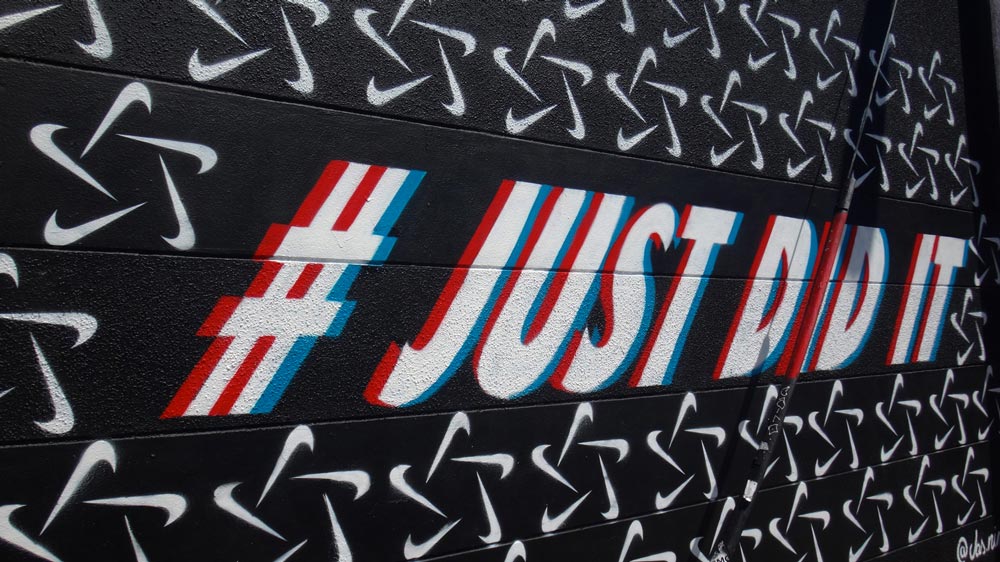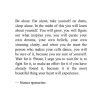
Have you ever heard the word “tagline” and wondered what it meant? Have other people told you that you should be using a tagline to help promote your business and sell your products or services? Does a tagline really matter? How can it help businesses succeed?
Table of Contents
- Define Tagline
- Taglines vs. Slogans
- Taglines vs. Logos
- Types of Taglines
- Pinpoint Your Messaging
- Commercials Represent Taglines
- Websites Represent Taglines
- Why Taglines?
Define Tagline
A tagline is a catchphrase often found in advertising. It is a quick, succinct representation of what your business does for consumers. It tells consumers what the value of your business is and helps them decide whether or not they should do business with you.
Consumers should be able to read your tagline and instantly determine if they would like to know more about who you are. Consumers should be able to read your tagline and recognize what niche you’re in. Taglines should be catchy and easy to remember so that consumers will begin to recognize your branding. Tagline recognition is another way to cement brand recognition in a consumer’s mind.
Taglines vs. Slogans
Sometimes business owners and entrepreneurs develop what they think is a tagline for their business, but it is actually a slogan. Taglines refer to the entirety of your business whereas a slogan refers to just one part (such as a product or service). Businesses might even have multiple slogans for all of their different products or services.
Your tagline is much more all-encompassing in that it should represent your entire business to potential customers. It can tell them what they can expect from you and why you stand out from the competition. A tagline can help you run effective marketing campaigns and hone in on your most important value point as a company.
Taglines vs. Logos
What about logos? Are taglines the same thing as using a logo? Logos typically represent your business with a name or graphic mark. There are many different types of logo design options but very rarely do they include a phrase. Logos help businesses explain who they are in a glance. They are visual and more easily featured on a wide variety of products.
Think of Apple’s pictorial mark logo. Then consider Apple’s tagline, “Think different.” The tagline is shorter than most taglines, but it tells the customer that Apple represents a company that involves higher thinking (and something creative or unusual). Because of Apple’s size, this tagline was enough to differentiate it from its competitors (especially because most consumers were already aware of their product offerings). Today, Apple is still considered a company that is more creative than other consumer tech companies. This tagline is part of the reason for that reputation.
Your tagline should probably contain a few more words, particularly if you lack brand recognition in your industry. If most people hear your business name and don’t know what you do as a business, then you should focus on creating a tagline that hints at what you do (as well as why you are of value to them).
Types of Taglines
Most taglines range from two to eleven words (shorter the better), and tell a short story or convey a short message to customers about the value of the business. The most successful taglines come from businesses that already have strong brand recognition (so their tagline can be broader and catchier), or from businesses that create taglines with strong value propositions. You need to be able to convey what your business does best and what customers can expect from you.
- Keep it simple – Try not to overcomplicate the tagline or do too much. You want your customers to remember what they heard or read about your company. When they see your brand name again, whether through online marketing or in a commercial, you want them to subconsciously link your tagline to your name. You want every interaction your customer has with your tagline to further cement your business in their minds.
- Don’t be generic – Your tagline should not be applicable to every industry. If your tagline is applicable to other businesses in your industry, that is okay. Your competitors may fit your tagline but they won’t be the one selling it. However, if your tagline makes sense for a toy company, pet care company, food company, and interior design business… then you have a problem. Your tagline doesn’t really say anything specific about what you do. Customers are bombarded with messaging today. They aren’t likely to remember your tagline immediately, but it’s important to make an impression. You want your customer to have an association so that the next time they see something that reminds them of your brand, they have that same association. Repeat messaging and numerous touchpoints are important when it comes to marketing your business. Taglines can help aid in this process.
- Tell a story – What story can you tell in a few words? Find a way to communicate what your brand does and what you stand for. This is where commercials can help. Try to think of your tagline as a short commercial. If you can take a commercial idea — a commercial story for your brand — and distill it down into a short succinct sentence, then you have accomplished your mission. You will have a tagline that conjures an image of your brand (and its story) in the mind of your potential customers.
Another type of tagline (or goal) — and this should be considered for every tagline — is an explanation of a benefit. You want to figure out what benefits your product or service offers to your ideal customer. Ideally, this benefit is something unique or special. From there you can take that benefit and successfully work it into your tagline.
Lastly, taglines should always be clear. Taglines shouldn’t use words that are confusing or are unknown to most of the population. Whatever words you use in your tagline should be words that are familiar, comfortable, understandable, and easy to remember for your target audience. The person who should be interested in your product or service needs to understand what you are saying. Try not to pile on adjective after adjective, as you might wind up creating something unreadable. You should be able to look at your tagline and quickly spout it off without stumbling over difficult words or awkward phrases.
Pinpoint Your Messaging
This is perhaps the most important part of writing a tagline for your brand: pinpointing your messaging. The best taglines say something specific. It doesn’t necessarily matter if the tagline has a more generalized approach but it needs to say something that lets customers form an initial understanding of who you are.
For example, if your tagline lets customers know that you are a logo design business then that immediately tells them who you are. If they are interested in logos then that’s an instant connection that cannot be ignored. Timing is everything in the business world so why overthink things?
On the other hand, if your tagline merely tells them that you are a creative company, is that really enough? Are you a creative writing company? A creative interior design company? A creative travel agent? Lots of businesses are creative. Telling a customer that you are creative just isn’t specific enough in terms of telling them who you are as a business. Pinpoint your message in order to educate and inform. Let them know what value you can bring to their life.
Commercials Represent Taglines
Are you looking for inspiration to help define what your tagline should say as a business? Commercials represent taglines.
When you want to come up with your own tagline for your business, try watching commercials (talk about easy homework). You can head to YouTube or Vimeo and watch brand commercials. Try looking at massive corporate commercials and perhaps online-only commercials for start-ups and small businesses. What do you see? What do you hear? What consistencies emerge?
The tagline for most businesses will be said and perhaps shown (on screen) during the commercial. Learning how these taglines tell a story can help inspire you during the brainstorming phase.
Websites Represent Taglines
Another place to find inspiration for your own tagline is to visit various brand websites. Typically brands will display their tagline under their logo or somewhere near the top of their home page. Take a look at how the tagline connects to the other components of the site. Look at how the tagline relates to the rest of the website copy. This can help inspire you to take what you have already written about your business and find your tagline within existing material.
Taglines need to represent your brand and they need to fit within your brand’s identity. What makes yours different? What similarities do you share with some of the more successful brands? Use that to your advantage when crafting your brand’s tagline.
Why Taglines?
Still wondering whether a tagline is worth it? Do you really need to use a tagline when you already have a logo that’s achieving the same goal?
While every business is different, taglines can usually add to your marketing materials in ways that a logo cannot. Taglines complement logos. Try incorporating your tagline into your logo (with a logo design mockup), to visualize how both elements would come together. Eventually, you can start to use this in an email signature, throughout other visual materials, and anywhere it would benefit your audience.












